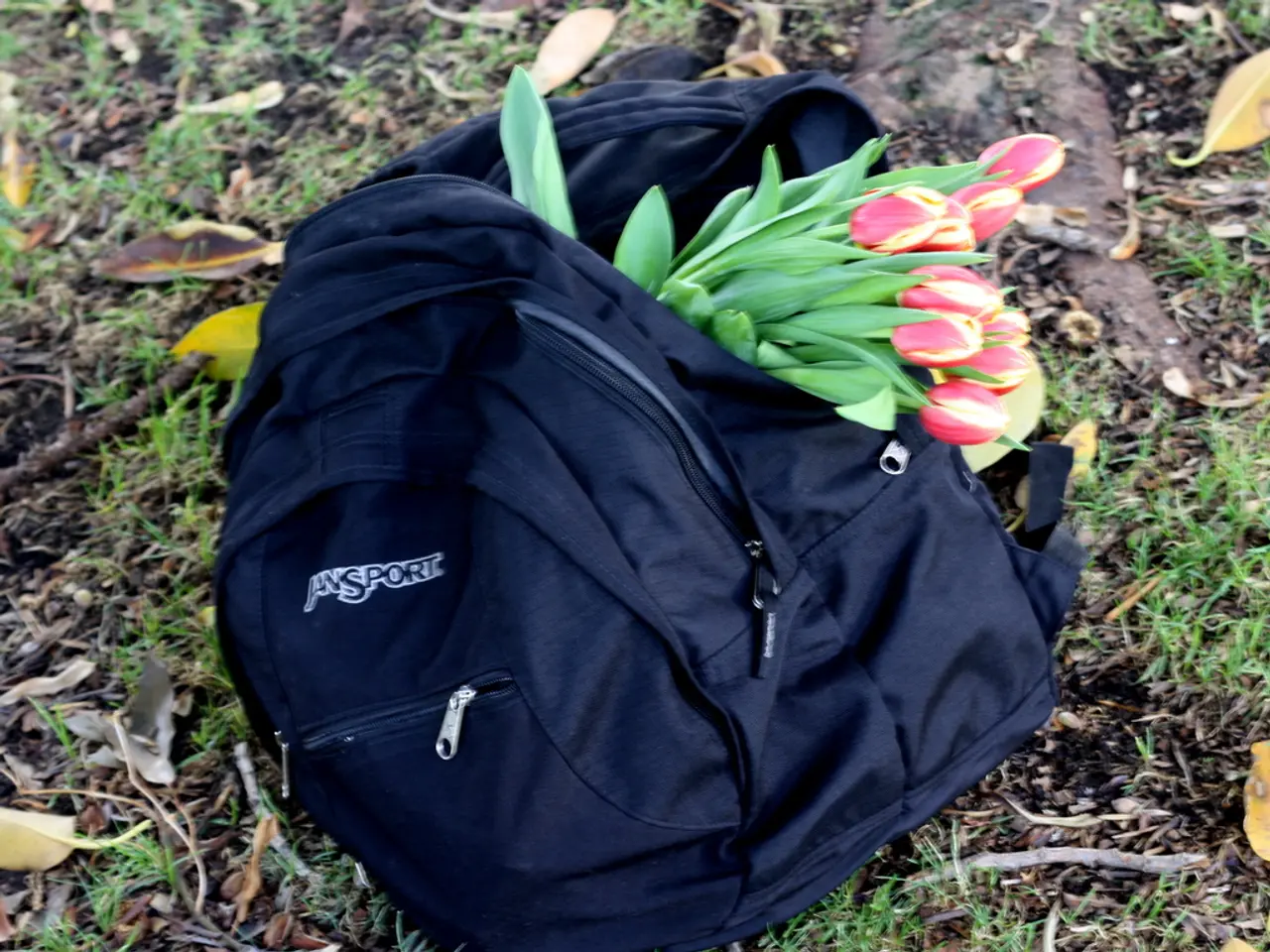Discovering the Ideal Grow Bags for Plant Cultivation
Grow bags, a popular gardening solution, have gained traction in recent years due to their functional advantages and eco-friendliness. These breathable fabric containers offer a cost-effective alternative to traditional planters for gardeners focused on plant health, sustainability, and flexibility.
One of the key benefits of grow bags is their superior aeration and drainage. Compared to plastic or terracotta pots, grow bags allow better air circulation to roots and excellent water drainage, reducing the risks of root rot and waterlogging. This is particularly important for maintaining healthy root systems and promoting overall plant growth[1][2][5].
Another advantage is the prevention of root circling. As roots reach the fabric surface, they are naturally air-pruned, which encourages the development of healthy new roots instead of becoming root-bound, a common issue with traditional pots[1].
Grow bags are also lightweight and portable, making them easier to move and handle than heavy ceramic or plastic planters. This feature is ideal for repositioning plants for optimal sunlight or managing space constraints[1][3][5].
In terms of environmental impact, many grow bags are made from recycled or biodegradable materials, making them a sustainable option. They can be stored flat and reused for multiple growing seasons[1][3].
Versatility and space efficiency are other notable advantages. Suitable for various plants, especially vegetables and shallow-rooted species, grow bags can be used in limited spaces or poor soil conditions, offering gardeners more options[3][4].
The permeable material of grow bags disperses heat evenly and improves airflow, which is beneficial to plant growth. Conventional planters tend to trap heat that affects the crops' root systems[6].
Grow bags are especially beneficial for growers with mobility issues due to their lightweight fabric. They are also easier to move around the garden compared to terracotta pots[7].
Although grow bags may lack the decorative appeal of ceramic or stone planters, their functional benefits make them an excellent choice for gardeners. They are more expensive than regular planters, but they are versatile, durable, and space-efficient, and can be reused from one growing season to another[8].
It's worth noting that some fabric grow bags cannot stand on their own unless filled with soil, while others can stand on their own even when empty[9]. Grow bags are used for growing a variety of crops, particularly vegetables and herbs, and there are even grow bags specifically designed for certain crops, such as potato grow bags and mushroom grow bags[10][11].
These specialized grow bags are tall and designed for easy harvesting. Grow bags are suitable for urban gardens or container gardens due to their ease of maintenance[12].
Whether you're a seasoned gardener or a beginner, grow bags offer a practical and eco-friendly solution for your gardening needs. You can purchase them at local gardening vendors, online marketplaces like eBay or Amazon, or eco-friendly online stores for fabric grow bags[13].
References:
[1] The Spruce, "Grow Bags: The Ultimate Guide to Fabric Pots", https://www.thespruce.com/what-are-grow-bags-2132730
[2] Gardening Know How, "Grow Bags", https://www.gardeningknowhow.com/garden-how-to/containers/grow-bags.htm
[3] Home Guides, "What Are Grow Bags?", https://homeguides.sfgate.com/what-are-grow-bags-93439.html
[4] The Old Farmer's Almanac, "Grow Bags: Pros and Cons", https://www.almanac.com/gardening/grow-bags-pros-cons
[5] Fine Gardening, "Grow Bags: The Pros and Cons", https://www.finegardening.com/ask-fine-gardening/grow-bags-the-pros-and-cons.aspx
[6] The Garden Helper, "The Benefits of Grow Bags", https://thegardenhelper.com/benefits-of-grow-bags/
[7] The Old Farmer's Almanac, "Grow Bags: Pros and Cons", https://www.almanac.com/gardening/grow-bags-pros-cons
[8] Home Guides, "What Are Grow Bags?", https://homeguides.sfgate.com/what-are-grow-bags-93439.html
[9] The Spruce, "Grow Bags: The Ultimate Guide to Fabric Pots", https://www.thespruce.com/what-are-grow-bags-2132730
[10] The Old Farmer's Almanac, "Grow Bags: Pros and Cons", https://www.almanac.com/gardening/grow-bags-pros-cons
[11] Fine Gardening, "Grow Bags: The Pros and Cons", https://www.finegardening.com/ask-fine-gardening/grow-bags-the-pros-and-cons.aspx
[12] The Spruce, "How to Grow Vegetables in Containers", https://www.thespruce.com/growing-vegetables-in-containers-2132724
[13] Home Guides, "Where to Buy Grow Bags", https://homeguides.sfgate.com/buy-grow-bags-93440.html
- For those who value a sustainable lifestyle, grow bags from home-and-garden sections offer a practical solution as they can be made from recycled or biodegradable materials.
- Due to their lightweight and portable nature, grow bags are an ideal option for gardening enthusiasts who prioritize the ease of gardening and flexibility in terms of home-and-garden layouts.




